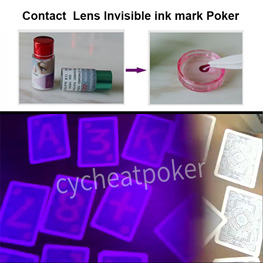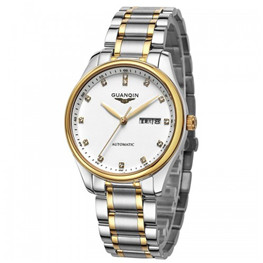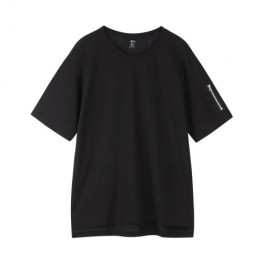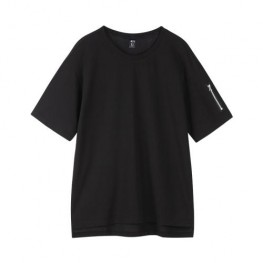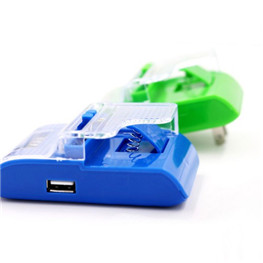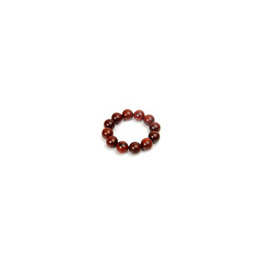o lixo de plástico que você jogou, finalmente ainda comido por você.
Regarding the impact of plastic pollution on us, I found a text saying: "Eating seafood is equal to eating plastic." Some readers have said that this statement is too extreme and alarmist, and the impact of plastic pollution has not yet reached this point.
Unexpectedly, in a leading research report published recently, Austrian scientists announced the first time that plastic particles were found in human stool samples.
Although scientists have been warning plastics about the potential dangers in our human food, the emergence of this direct evidence has caused a sensation!
This heavy news has sparked reports of authoritative media and scientific journals from all over the world.
Plastics are coming too fast from polluting the marine environment, causing damage to marine life, and actually starting to harm humanity.
"It is estimated that 50% of the world's people have plastic particles in the body."
According to reports, the Vienna University of Medicine in Austria and the Austrian Federal Environment Agency said that scientists have found plastic particles in the feces of the eight subjects involved in the study.
Philipp Schwabl, Ph.D., from the Vienna University of Medicine in Austria, published the results of the study at the 26th UEG Week Forum, confirming the long-standing doubts that plastics do enter the human body.
The eight people who actively participated in the trial were between the ages of 33 and 65. They did not know each other and lived in different areas. They came from different continents and lived in Japan, Finland, Italy, the Netherlands, and Poland. Russia, Britain, Austria.
Dr. Philipp Schwabl publishes report at URG Forum
The experiment took one week. These subjects recorded their diets on a daily basis and provided their own stool samples as required after normal bowel movements.
For the objective conditions of the experiment, the eight people involved in the experiment were not vegetarians.
All of the participants consumed food packed in plastic or drank plastic water, and six people consumed fish or seafood during this period.
A week later, based on a sample test of the stools of the eight participants, it was found that not only the plastics of the eight people contained plastic particles, but also nine types of plastics, and about 20 microplastic particles per 10 grams of feces.
According to Dr. Philipp Schwabl, the plastic particles found are between 50 and 500 microns in diameter and come in a variety of shapes, including polypropylene (PP), polyethylene and para-dicarboxylate (PET), which are common in our daily lives. .
So where does the plastic that comes into the human body come from?
According to the report, most of the plastic particles are decomposed from large plastic waste in the ocean, and the appearance of plastic particles in marine organisms is no longer news. .
Belgian and British researchers have found that Qingkou (also known as mussels), which often appears on seafood dishes, contains about 90 plastic particles per 20th.
Not only marine life, but studies have shown that American scholars have studied 150 samples of tap water from 14 cities on five continents and found that up to 83% of the samples have plastic particles. The drinking water you drink may contain invisible plastic fibers.
The study gives predictions of vibrating: It is estimated that plastic particles can be found in about 50% of the world's population, but it needs to be expanded Research to /confirm/i.
02
"New Zealand 9 kinds of fish 8 kinds have eaten plastic"
Dr. Ana Markic from the University of Auckland in New Zealand, after long-term research, found that 8 of the 9 commercially available fish in New Zealand are regularly eaten with plastic elements.
. A staff member from the 5 Gyers Institute in the United States conducted a survey at a beach in Wellington, New Zealand. In a short period of time, researchers collected hundreds of plastic microchips in an area of about a few square meters.
Researchers collect plastic debris within a few square meters.
once the plastics enter the ocean, the plastics are consumed by marine animals and enter the food chain, and eventually they are likely to be consumed by humans. .
5 Gyers' research report shows that plastic products have begun to enter the New Zealander's food chain system.
03
People don't eat plastic but plastic eat people
Eating seafood is just about eating plastic. Is this sentence now more difficult to read again?
People don't take the initiative to eat plastic, but when plastics are everywhere, plastics start to eat. .....
Even though humans are at the top of the food chain, we are still in the same ecological cycle of the same planet, and today plastics are everywhere. about 8 million tons of plastics are dumped into the ocean each year, and China's dumping accounts for about one-third. Now China bans import of foreign waste to stop pollution
In the United States, approximately 8 million plastic particles are discharged into the habitat of marine life every day.
There are currently about 5.25 trillion plastics in the ocean,
92% of which are plastic particles! There has been a study showing that almost all marine species now have plastic contaminants in their bodies, including the most distant species on Earth from humans.
Even the Chinese "Jilong" submersible found micro-plastics in the deep seabed marine organisms of 4,500 meters in the Antarctic.
The result of another research by scientists also confirms this statement.
The deepest Mariana Trench in the world has a maximum depth of 10,911 meters, which is more than 2,000 meters higher than the highest peak of the land surface, Mount Everest. It is too far away from the world in which we humans live, so it has always been considered the most mysterious piece of earth on the earth.
However, according to the latest research results of scientists, In organisms deep in the Mariana Trench, PCBs (polychlorinated biphenyls, a serious carcinogen), a chemical material that has long been banned, have been discovered.
Scientists believe that these PCB residues are likely to drift with animal carcasses and some plastic waste and sink into the depths of the trench. Many organisms eat these harmful substances when they are foraging, thus forming a vicious circle.
An important source of plastic particles is the personal care products that people use every day, such as scrubs, shower gels, toothpastes and cosmetics. Another source is rayon fabrics such as polyester (polyester), nylon (nylon, or polyamide), polypropylene, chlorin, spandex (Leica), and vinylon. .....
Some products using microbead granules
There are currently 1147 kinds of care products containing microbeads in the world. In general, a bottle of scrub facial cleanser contains 330,000 plastic particles. These tiny particles flow into the sewers and into the lakes and oceans.
Seafood Pan NZ CEO Tim Pankhurst has said that studies have shown that fish are more likely to eat microplastics than normal food sources, and eating microbeads is very detrimental to their health.
Plastic particles will eventually enter the lakes and oceans through the ecological circulation system, be eaten by marine organisms, and return to our table through the food chain! .
04
What happens when people eat plastic?
Whether you eat seafood or not is to eat plastic. At this time, the answer is self-evident, and even you can't even ensure water that contains plastic fiber.
In an interesting way: Every day when you eat, you are in a state of Schrödinger.
The water you drink from the food you eat may or may not contain plastic, but this may require you to open the box on the day you are sick.
Experts say: These tiny plastics are extremely harmful to our health, affect intestinal tolerance and immunological reaction, spread toxic chemicals and pathogens, and the smallest microplastics can enter blood vessels and lymphatic systems. Even the liver, affecting the immunological
//
Plastic life cannot escape
Maybe the fate of our generation.
Those we throw away.
It's return


























